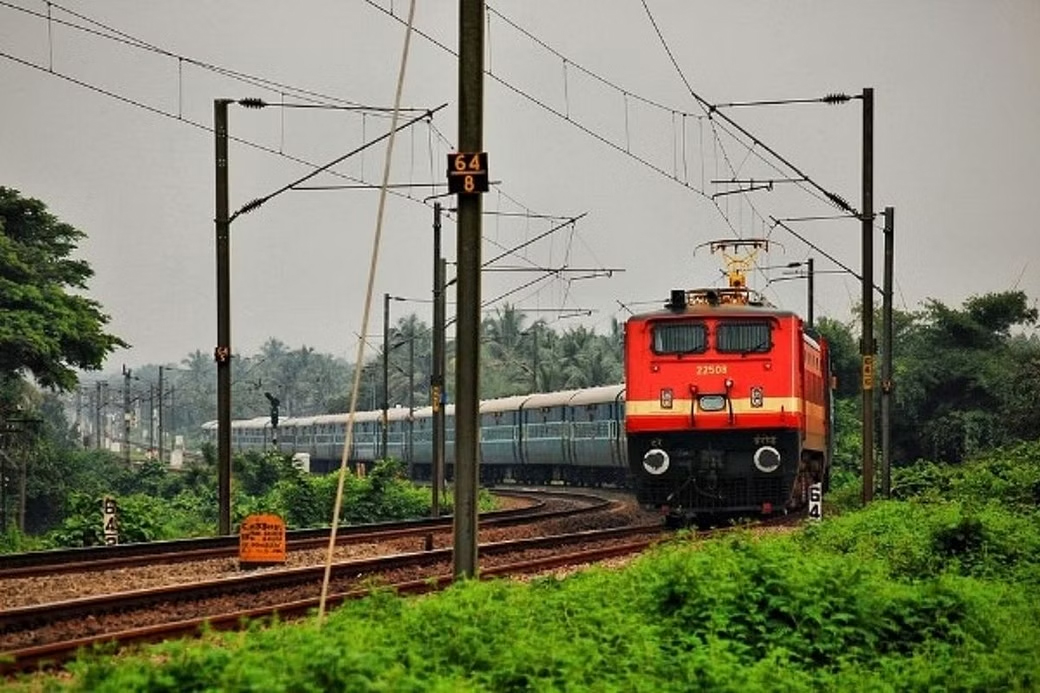Arun Kumar Shrivastav
India’s North-East has seen several major infrastructure projects in the past few years. The latest is a 57 kms broad gauge railway line between India’s Kokrajhar and Bhutan’s Gelephu, for which the work is going to start this year. This would be Bhutan’s first railway project and one of the five railway projects for which India and Bhutan had signed an MoU in 2005. The Kokrajhar-Gelephu railway line project’s estimated cost is $130 million and the preliminary engineering work is about to complete. In this context, a meeting between Bhutan and Indian Railway officials was held last month in Guwahati to expedite the construction of the five rail lines listed in the 2005 MoU.
India’s push to extend its rail links to Bhutan follows enhanced rail connectivity with Bangladesh and Nepal. Three weekly trains are running from Kolkata and New Jalpaiguri to Dhaka.
However, India’s push for connectivity in the land-locked and majorly neglected Northeast seems to be spurred by similar developments in China, whose 435-km electrified rail link between Lhasa and Nyongchi, which was opened in 2021, passes a short distance from Arunachal Pradesh. Another Chinese project in that region, the 250-km Lhasa-Xigaze railway line, will cross a close distance from Sikkim. As if these were not enough for India’s discomfort, an 825-km rail line connecting Hotan in southwestern Xinjiang and Ruoqiang in southeastern Xinjiang will pass closely from Ladakh.
These rail lines promise to connect China’s remote areas with high-speed electrified railways. But they also pose serious strategic challenges for India and provoke global sensitivity on Tibet.
Meanwhile, in 2014, Arunachal Pradesh was brought to the Indian Railway map for the first time by linking Naharlagun. Now, three new rail lines are being built in the state. These are the 248-km North Lakhimpur – Silapathar line, 378-km Bhalukpong – Tawang line, and the 227-km Pasighat – Rupai line. Together they add nearly 800 km of new railway tracks in India’s remotest outpost.
In April 2021, the 35-km Jaynagar-Kurta section of the 68.7-km Jaynagar-Bijalpura- Bardibas rail project was inaugurated by Indian Prime Minister Narendra Modi and Nepalese Prime Minister Sher Bahadur Deuba. Other cross-border rail projects involving India include 15-km Agartala-Akhaura (Bangladesh), which is almost ready. The 18.6-km Jogbani-Biratnagar (Nepal) railway line has also made significant progress with the first 8-km stretch ready except for civil construction work for which contracts have been awarded.
Besides cross-border rail connectivity, North-Eastern states are also slated to get direct international air connectivity from airports in Manipur, Tripura, and Assam. Under the Ministry of Civil Aviation’s International Air Connectivity Scheme (IACS), these airports would handle direct flights to and from Bangkok, Kathmandu, Dhaka, Mandalay, Hanoi, Kunming, and Chittagong. The airports in the three North-Eastern states are currently being upgraded for this purpose.
So, the news is India’s North-East is gradually moving from obscurity and neglect to spotlight and prominence. If we consider the infrastructure being built across the border in China, and the multi-modal transit hub involving India, Bangladesh, and Myanmar, there is a significant uptick in how that entire region is being enabled to harness its potentials.
While China’s road and rail infrastructure close to India’s borders is a serious challenge for Indian security establishments, in a peacetime environment, they can significantly improve the mobility of people and goods in the region. They also connect a large cross-border land mass by road, rail, and air giving the feeling of an Asian Union, along the lines of the European Union, in the works.
For a traveller, it’s an exciting proposition to be able to visit Bhutan and Tibet by train or travel from India to several South-East Asian nations by road. Being able to fly from Imphal to Bangkok and other destinations by direct flight can be a completely redeeming experience for the North-Eastern people.
All these prospects make North-East the new sunrise destination. Whether it’s real estate or tourism, India’s traditional attractions are bound to lose some of their charm as North-East prospers and finds its due place in India’s growth story. The economic success of India in recent years is much attributed to its focus on increasing connectivity within the country by building roads and new airports. These infrastructure facilities provide people access to new markets. This is like awakening from darkness to light, from despair to hope, from helplessness to positivity.
The road link between India and Bhutan and the expansion of the rail network in Arunachal Pradesh are India’s way to respond to the Chinese initiatives in their part of the geography. But Indian initiatives exhibit the country’s confident steps towards reimagining the development and prosperity of its North-Eastern states. (IPA)
Trending Now
E-Paper


